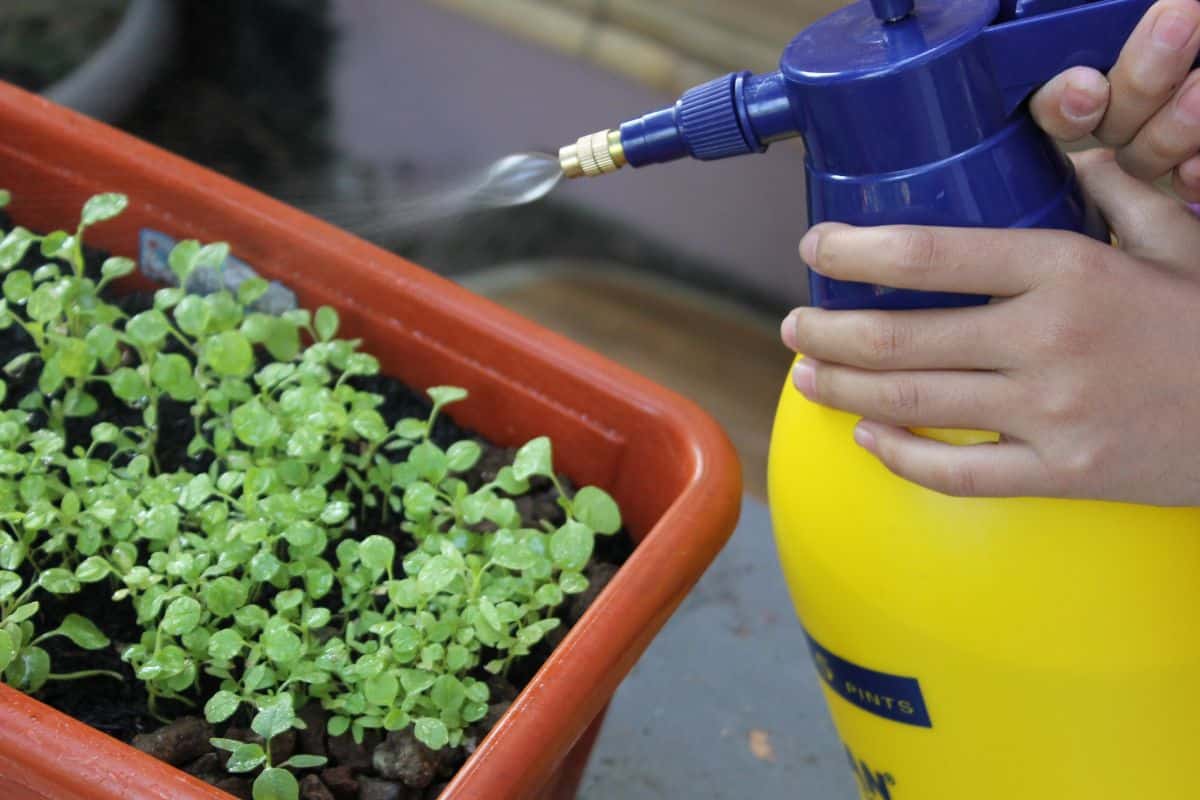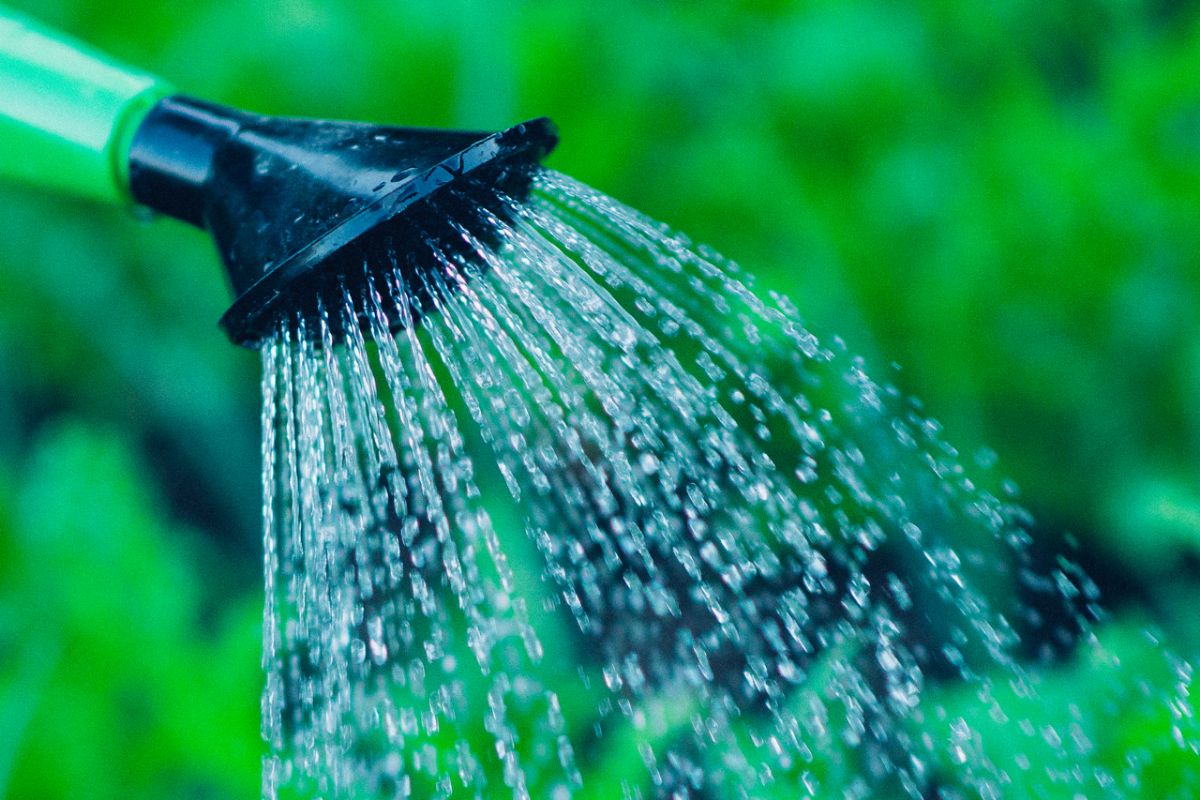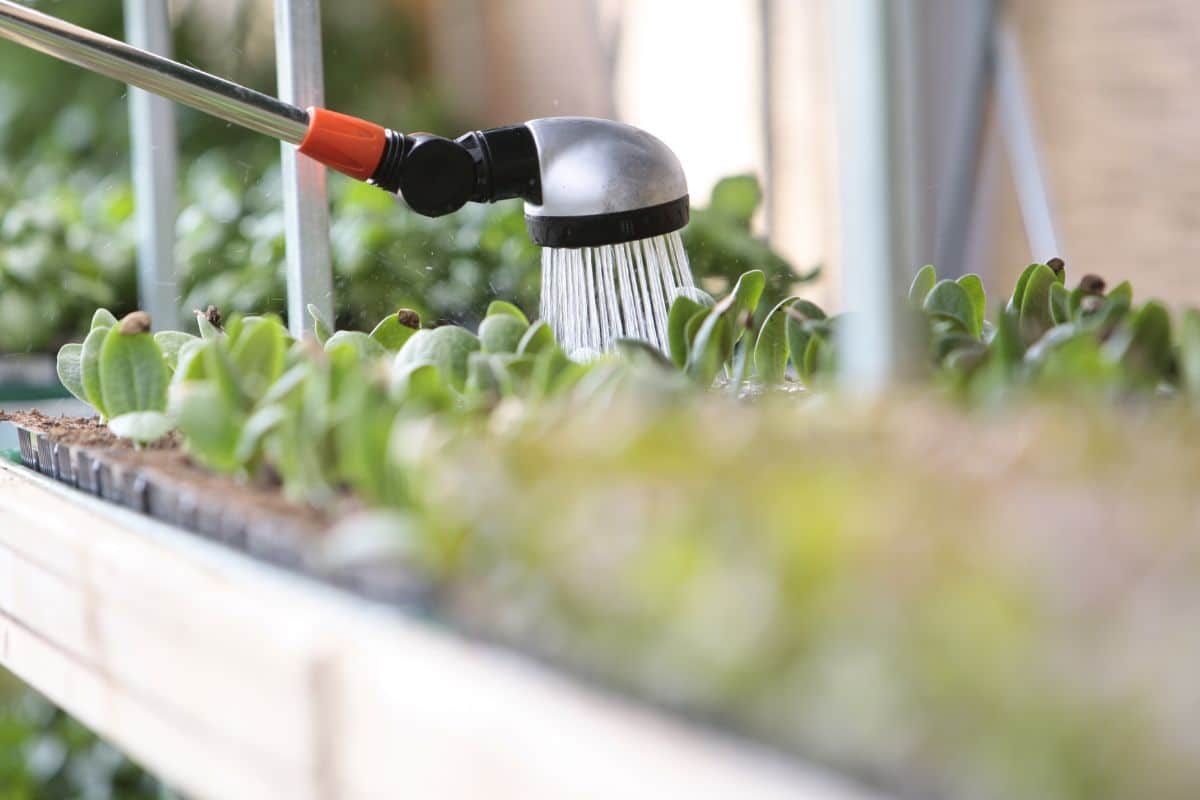
When you water your plants, you may worry about whether you are using the right amount of water. The one from the tap (or from the hose) may not be since, as you know, it contains chlorine. But how to remove chlorine from irrigation water?
If you want your plants to be well, it is best to give them the best possible water. But sometimes that means spending money you don't have. Therefore, there are some tricks to ensure that irrigation water does not have chlorine. And here we are going to explain some options for it.
Why you have to remove chlorine from irrigation water for plants

As you know, the water we drink contains chlorine. Actually, the vast majority of drinking water contains it because it is the "ingredient" that is used to kill pathogens and also guarantees that the water is safe to drink.
But in the case of plants it is very harmful to them. and it is because that chlorine ends up killing fungi and bacteria in the plant, as well as doing a disinfection. You may think that this is good, but the truth is that it is not. And it is that what it disinfects (that is, by eliminating fungi and bacteria), what it does is take away those that are beneficial to her, in such a way that it affects the health of plants.
At first it only seeps through the earth, but later it goes attacking the roots and causes drying of these what causes the plant to end up dying.
For this reason it is said that plants should not be watered with tap water, because although it may seem that nothing is happening, in the long run it may be the cause of your plant dying.
Of course, keep in mind that, in addition to chlorine, limescale can also be a serious problem in plants and that you should control this aspect so that the water you give your plants is as healthy as possible (you will notice it, especially in the growth and flowering of the plant).
Consequences of watering without removing chlorine

Let's stay on topic. As you know, we have already told you the reason why it is not good to water with chlorinated water. But in case it is not clear to you, we have compiled some consequences of watering without removing chlorine. And from now on we tell you that you are not going to want that to happen to your plants.
Because, when you water with water that has not been treated for the plants, you can suffer from:
- Irritation of the root system of plants: Chlorine can irritate the root system of plants and cause them to dry out. In other words, it will lose roots, and it will take much longer for new ones to grow, in such a way that, when you want to realize it, it will be more affected by its health and will not grow as much as you might think or want. Including the leaves, which will be smaller and smaller.
- Disinfection of plants: This is something that we have already talked about, but we will clarify it for you. It is that chlorine acts on plants disinfecting them, that is, it kills bacteria and fungi. So far so good, but it also loads the beneficial ones, and that will make the plant incapable of absorbing nutrients and resisting diseases.
- Loss of flowering and growth: When the plants do not receive enough nutrients, and also the environment is disinfected by chlorine, flowering and growth stop. Or directly does not.
To avoid all these problems, you should keep in mind that removing chlorine from the water of the plants is the best. And how to do it? Don't worry, we'll explain it to you below.
How to remove chlorine from irrigation water for plants

Now yes, we are going to explain the different ways to remove chlorine from irrigation water for plants. There are several, so we are going to try to give you different solutions to give your plants adequate water without costing you a lot of money, especially if you have a lot.
Leave the water still
This is one of the most used methods, in such a way that Chlorine will evaporate naturally from the water. Keep in mind that lime will also do so, although in this case it will remain at the bottom of the container, it will not go away, which is why, when using it, we recommend that you do not move the water a lot or use it completely (the base is better not to throw on the plants).
To do this, you have to leave an open bottle, or a container, for 1-2 days so that the chlorine is completely gone.
Activated carbon filter
If you have aquariums, you surely know what we mean. Is about special filters that help remove chlorine from water and make it suitable for fish, but also for plants (hence it is said that aquarium water can be used on plants).
You would simply have to put it in the water that you are going to use, wait a while and you will be able to use it and give more quality to the water.
Chemical products
In the market you can find chemical products that can remove chlorine, as well as other elements, from the water you want to use for irrigation. They are not cheap, but sometimes when you have a lot of plants it can be the best solution to go faster.
These you can find them in gardening stores or online in some web pages.
air purification plants
Finally we have air purifying plants. Some are the Boston fern or dracaena, that can remove chlorine from both air and water. Now, to use them properly you would have to fill the bottle with water and put it next to those plants so that, in 1-2 days, they have eliminated the chlorine and you can use the bottle for the purpose you want, which is watering.
As you can see, there are many ways to remove the irrigation water from the water of the plants, do you know of any more that are effective? Tell us about it.